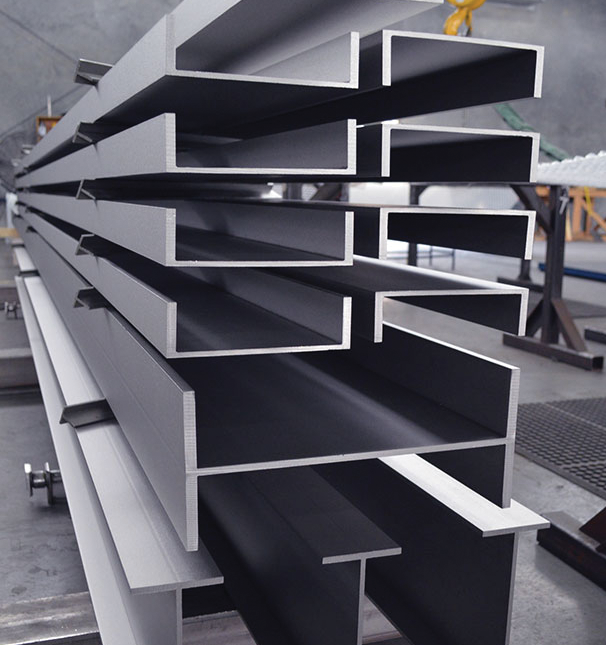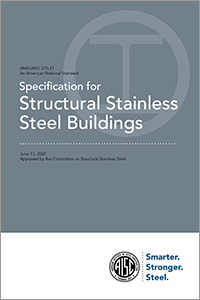Building and construction design standards codify best practices, methods, and technical requirements to create a safe and sustainable built environment for the community. Standards are developed through a process of consensus. In essence, they are the distilled wisdom of people with expertise in their subject matter – material producers, fabricators, manufacturers, designers, researchers, trade associations, users, or regulators.
Building codes - Setting high standards for structural stainless steel

The sudden failure of a building or bridge is mercifully a rare event, thanks largely to international or national standards: structures are designed in accordance with a design standard, using products conforming to a product standard and manufactured using techniques and to a quality level defined in a construction standard.
The requirements in design standards are often hard-fought compromises between economy and ease-of-use.
It is also important that design standards are comprehensive and cover the range of structures, materials and loading scenario frequently encountered, and that they are not unduly conservative, resulting in over-design and the waste of valuable finite resources
In the absence of a standard, time and cost-consuming code exceptions must be obtained from the relevant building authorities and this often cannot be justified by busy designers.
This was the situation in the US until last year for designing structural stainless steel – there was no stainless steel design specification for mainstream structural sections, which are the majority of the market, such as welded, hot rolled or hollow sections. Consequently, it was much easier, cheaper, and faster for engineers and their clients to use other steels, aluminium, wood, FRP, and concrete, which have structural standards and code acceptance. This situation presented a significant barrier to stainless steel’s market growth and broad acceptance.
The American Institute of Steel Construction
The structural design standards produced by the American Institute of Steel Construction (AISC), or closely related specifications, are used throughout North and South America, as well as in the Middle East and also for about 30% of the projects in China.
2018
In 2018, ten years after the stainless steel industry had started discussions with them, AISC finally announced their intention to prepare a full ANSI (American National Standards Institute) design standard for structural stainless steel.
Work began with the establishment of the AISC Committee on Structural Stainless Steel, which included stainless steel fabricators and welding experts, metallurgists, designers, and academics. The Steel Construction Institute in the UK played a leading role in drafting the new design rules. These were based on the significant structural research which had been carried out by universities around the world over the last 30 years or so, and had already been used as the basis for developing the rules in the structural stainless steel Eurocode.


2021
Three years later, the new design standard ANSI/AISC 370-21 Specification for structural stainless steel buildings was published.
It is expected that the availability of this up-to-date, user-friendly and economic design specification will remove significant long-standing obstacles for structural stainless steel designs and expand global market potential for nickel-containing austenitic and duplex stainless steels
The benefits of this standards work are not limited to buildings and related structures: it is expected that these stainless steel design rules will be referenced in ANSI/AISC N690, Specification for safety-related steel structures for nuclear facilities, which is used globally, and currently does not give any stainless steel structural design information.
Additionally, work is starting under the auspices of AASHTO (the American Association of State Highway and Transportation Officials) to modify the rules in ANSI/AISC 370 so that they can be used for the design of duplex stainless steel highway, pedestrian and rail bridges in the US
This article was first published in our Nickel Magazine VOL 37-1, in April 2022.


